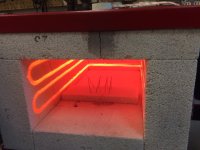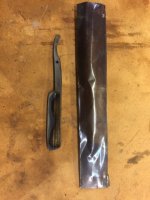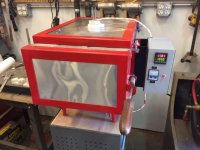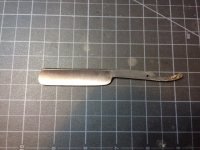Here’s what I can do to the spine of the one I just put on a hone for a few seconds with a very soft steel knife.
It’s looking like the stuff on the outside is hard and brittle. Inside is soft. Again, trying the same on even my softest razor has the razors striations filing away at the knife.
Anyone work with steel? Is it possible they tried to harden, but didn't heat the steel enough and got a hard/brittle exterior and soft interior? Cause this black stuff outside isn't simple patina. It's like scale. It's brittle, chips off, and hard as nails. Inside is soft, useless steel.
That's because it /is/ scale
Is it possible these are drop forged blanks? If so, they would have a very light coat of scale all around the outside, but it wouldn't look anything like the "scale" that piles up while a hand shaping smith heats and reheats, it would be a single skin tight layer.
Similarly, if they tried to harden using relatively simple tools for the job, the entire outside skin could oxidize and would form a black scale skin before the quench. That's not such a problem in an of itself, but it also can indicate a decarburized condition of the steel. Carbon loves oxygen even more than iron does, and if allowed to be released from the iron matrix, it will flee, leaving behind soft iron. That's a pretty easy way for a relatively new hand at heat treating to ruin an otherwise good blade - too much heat for too long.
A common problem newer knifemakers often have is that their knives seem to take and hold an edge like crap for the first half dozen or so sharpenings. Then, after a while, suddenly, the knife will be able to take and hold an edge. The decarb'ed steel gets ground away, and underneath it is the properly hardened steel.
In your shoes, I would take one of the razors I had already ruined my chances to return, and try grinding away at the edge with some 600 grit - hone it like I MEAN it for a while. Then try setting and refining a bevel. There might be hard steel under the decarburized iron.



